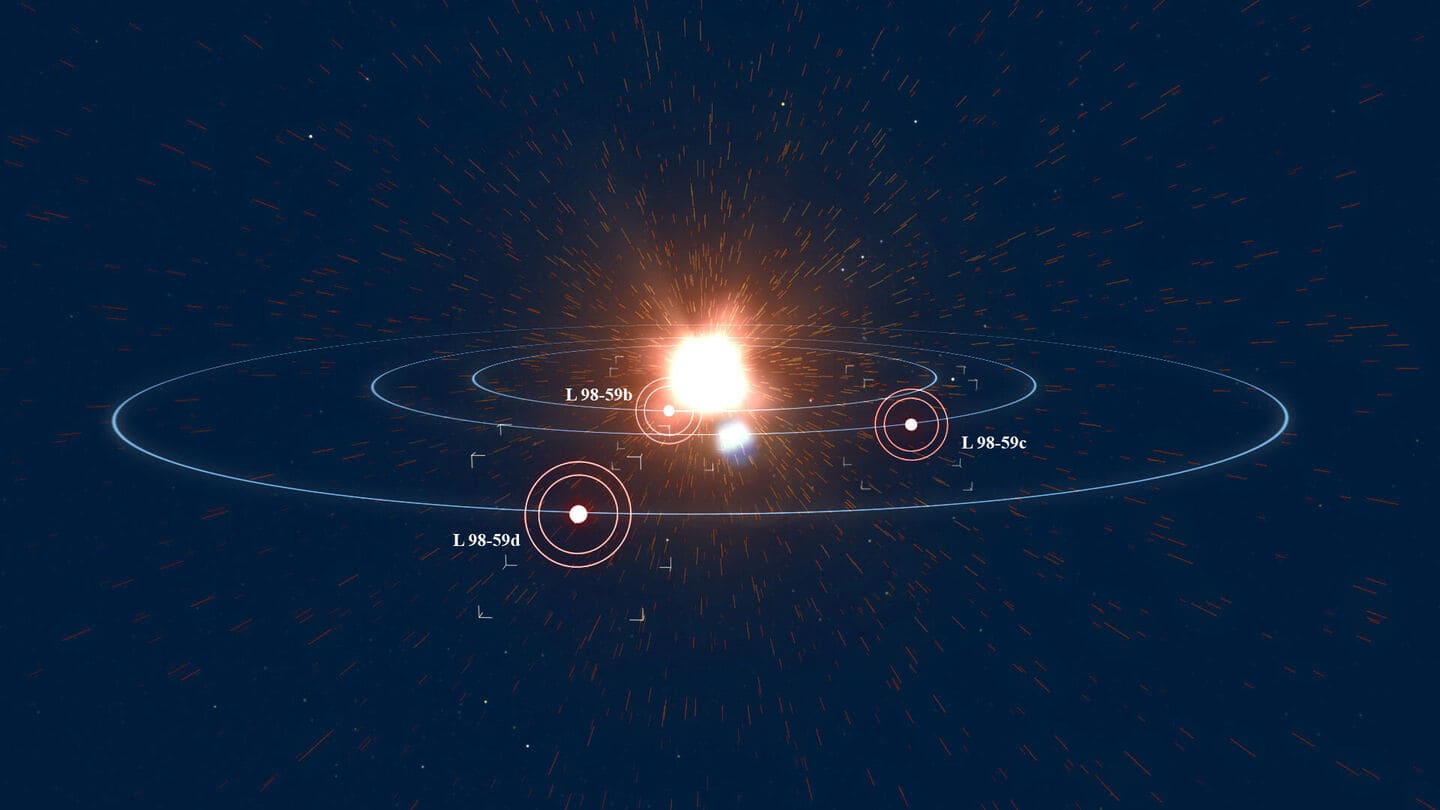
This potentially habitable planet lies around 35 light-years away
What's the story
A team of astronomers from the Universite de Montreal (UdeM) has confirmed a fifth planet in the L 98-59 system, a red dwarf star located some 35 light-years away. The newly identified world, dubbed L 98-59 f, lies within its star's habitable zone. This is where conditions are just right for liquid water to exist on a planet's surface. The findings were published in The Astronomical Journal.
Planetary details
System with 5 planets
The L 98-59 system consists of five planets, including the newly confirmed one. Three were discovered in 2019 with NASA's TESS space telescope, and a fourth was revealed through radial velocity measurements. These worlds all have masses and sizes compatible with terrestrial characteristics. The innermost planet, L 98-59 b, is just 84% of Earth's size and half its mass—one of the few well-measured sub-Earths known to date.
Distinctive traits
Unique characteristics of these worlds
The two innermost planets in the L 98-59 system may be extremely volcanic due to tidal heating, much like Jupiter's moon Io. The third planet is unusually low in density and could be a "water world," a planet rich in water unlike anything seen in our solar system. These unique characteristics make this planetary system an interesting subject for future atmospheric studies with the James Webb Space Telescope (JWST).
New find
Discovery of the new planet
The existence of the fifth planet, L 98-59 f, was confirmed by observing slight changes in its host star's motion. This was done using HARPS and ESPRESSO data. L 98-59 f gets as much stellar energy from its star as Earth does from the Sun, placing it squarely in the habitable zone where water could theoretically exist in liquid form.
Upcoming research
A look at future studies
The L 98-59 system's proximity, its host star's small size, and the diversity of planetary compositions and orbits, make it an ideal candidate for atmospheric follow-up with JWST. The research team has already started this work. "With these new results, L 98-59 joins the select group of nearby, compact planetary systems that we hope to understand in greater detail over the coming years," said Alexandrine L'Heureux from UdeM.